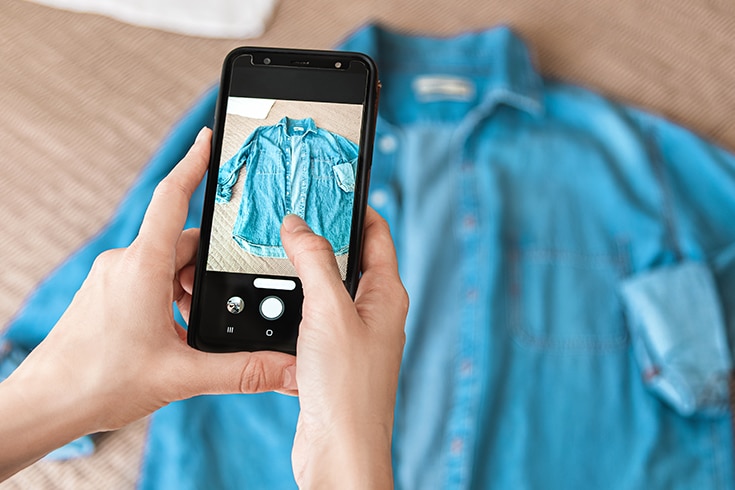Legal Insights on Design Right Infringement Cases in Japan

Once you acquire a design right, you can exclusively use the registered design, and against infringements of the design right by similar products, you can demand the cessation or prevention of the infringement (Japanese Design Law Article 37), and claim for damages (Japanese Design Law Article 39).
Article 24, Paragraph 2 of the Japanese Design Law states, “The judgment of whether a registered design and another design are similar is based on the aesthetic sense evoked through the viewer’s visual perception.” However, when it actually comes to a lawsuit, how is the similarity judged? What is compared and examined?
Case Where Design Right Infringement Was Recognized
Omron, the holder of the design rights for the “Body Composition Analyzer with Weight Scale”, claimed that Tanita’s production, transfer, delivery, offer of transfer, import, and export of body composition analyzers infringed on their design rights. Omron sought an injunction against Tanita’s production and disposal of the body composition analyzers, as well as damages.
On March 18, 2011, Omron filed a design registration application for the main design as the “Body Composition Analyzer with Weight Scale” and the related design, and the design rights were registered on September 22 of the same year.
The court ruled that the main design and the defendant’s design were not similar, but the related design and the defendant’s design were similar. Therefore, this article will focus on the related design.
What Determines the Judgement?
In negotiations and lawsuits regarding design right infringements, the key point of contention is whether the “essential parts of the design are common”.
This “essential part”, which attracts the attention of the consumer, is examined to see whether both designs share a common configuration in the essential part and whether they share a common aesthetic overall.
Since it is not a motorcycle or a bag, when advertising or displaying in a store, the body composition analyzer is arranged to show the front to the potential buyer. It is also natural to assume that when the consumer uses the body composition analyzer, they will look at and operate the device from the front, where the LCD display window and switch patterns are located.
Therefore, the court ruled that when a consumer purchases a body composition analyzer, they would first focus on the front view, considering how the electrodes are arranged on the front of the main body, the shape of the electrode part, the position and shape of the switch, the position and shape of the LCD display where the measurement results are displayed, and so on.
Furthermore, the body composition analyzer became a popular product because it is thinner than traditional weight scales, so it is assumed that consumers also pay attention to the thinness of the product, and therefore, they would also focus on the side view. On the other hand, it was ruled that consumers do not pay attention to the shape of the back, as it is not seen when the body composition analyzer is used in the usual way, nor is it part of the product that is advertised for sale.
In other words, the most attention-grabbing aspects are the “arrangement of the four electrode parts near the four corners of the front of the transparent glass plate”, the “LCD display window provided on the main body part near the upper center of the front of the transparent glass plate”, the “multiple switch patterns below the LCD display window on the front of the transparent glass plate”, and the “fact that the transparent glass plate and the back of the main body are laminated together” in the side view. These were judged to be the essential parts of the related design.
Differences in Essential Parts Resulted in Judgment
Based on this, the court judged the differences in the specific configurations of the related design and the defendant’s design,
- The aspect ratio of the transparent glass plate is different between the related design and the defendant’s design
- The defendant’s design has a border pattern around the LCD display window, which the related design does not have
- There are differences in the corner radius of the transparent glass plate, the ratio of width and length of the electrode part, the relationship between the bottom edge of the LCD display window and the bottom edge of the electrodes placed on the left and right of the upper side, and the number of switch patterns
- There are various differences in the shape of the back
However, it was stated that “although there are differences in the shape of the back of the main body, this is not a difference in the essential part”, and
Although the aspect ratio of the transparent glass plate is different between the related design 2 and the defendant’s design (the related design 2 is about 1:1.4, and the defendant’s design is about 1:1.43), the difference is extremely small, and both should be considered as giving the viewer the impression of a horizontally long rectangle. Also, it is recognized that the defendant’s design has a border pattern around the LCD display window, but it is not so large compared to the size of the LCD display window, and it is not a conspicuous color in the front view. Furthermore, although there are differences in the corner radius of the transparent glass plate, the ratio of width and length of the electrode part, the relationship between the bottom edge of the LCD display window and the bottom edge of the electrodes placed on the left and right of the upper side, and the number of switch patterns, these do not outweigh the common aesthetic given to the viewer by the nearly identical shape of the transparent glass plate.
Tokyo District Court, February 26, 2015 Judgment
As a result, the court recognized the infringement of design rights and ordered Tanita to pay 129,153,662 yen in damages to Omron.
The judgment is that although there are differences in the essential parts, they are extremely small. Note that the term “viewer” in the judgment refers to the “observer”, which is the consumer.
Case Where Design Right Infringement Was Not Recognized

Tiger Thermos Co., Ltd., which holds the design rights for a “portable thermos,” claimed that the manufacture and sale of the defendant’s portable thermos (the defendant’s product) by Tatsumiya Co., Ltd. infringed on their design rights. They sought an injunction against the manufacture and sale of the defendant’s product, as well as payment of damages based on the tort of design right infringement.
What is the Essential Part?
The design in question and the defendant’s design are both portable thermoses, and their consumers are general consumers. Also, since these are used on a daily basis and carried around, it can be said that consumers focus on the overall appearance that affects the convenience of carrying.
However, it was recognized that the overall cylindrical shape and the shape composed of the main body and the cap, which are ①, were generally known before the application of the design in question, in other words, they were general.
Furthermore, the court also recognized that the shapes of ② a cut-out part in a ring shape between the lower end of the cap and the main body, ③ a shape where the inner member of the lower end of the cap appears slightly protruding from the peripheral surface in a thin band ring shape, and ④ a ring-shaped line parallel to the bottom surface near the lower end of the main body, and the part where this part becomes a round bulge in a horizontal band shape, were also publicly known before the application of the design in question. In other words, these are not included in the design rights.
The court then stated that the personalityistics of the shapes ① to ④ in the design in question themselves should not be considered as constituting the essential part of the design in question, and that the essential part of the design in question is a more specific shape related to each of the above shapes, namely, ① the ratio of the diameter and height of the cylindrical bottom surface, the ratio of the height of the main body and the cap, ② the specific shape of the thin band ring at the lower end of the cap, ③ the specific shape of the ring-shaped cut-out part (groove part) between the lower end of the cap and the main body, ④ the specific shape of the ring-shaped line and the round bulge in a horizontal band shape near the lower end of the main body. And when comparing the design in question with the related design, it was stated that ① and ②, which are common to both the related design and the design in question, should be given more weight in the judgment of similarity.
Differences in Essential Parts Resulted in Judgment
The design in question and the defendant’s design both have a cylindrical overall shape and are composed of a main body and a cap. So, what about the differences?
The following differences are recognized:
1. The ratio of the height of the cap to the overall height (essential part ①)
The design in question is about 1/6, while the defendant’s design is about 1/8
2. The ratio of the diameter of the bottom surface to the height (essential part ①)
The design in question is 1:2.3, while the defendant’s design is 1:3.6
3. The shape between the cap and the main body (essential part ③)
The design in question has a groove part with a width of about 1/5 of the height of the cap, while the defendant’s design does not have a groove part, and only the joint surface between the cap and the main body exists
4. The shape of the lower end of the cap (essential part ②)
The design in question has a thin band ring part that protrudes from the peripheral surface, while the defendant’s design has a thin band ring part that does not protrude much from the peripheral surface
5. The shape of the main body slightly from the bottom surface (essential part ④)
The design in question has a round bulge on the horizontal band, and a thin groove running horizontally around the protruding top, while the defendant’s design has a line-shaped part running parallel to the bottom surface
6. The shape of the mouthpiece of the main body
The defendant’s design has a cap attached with a separate member covering the outer peripheral surface, while the design in question does not have such a shape.
Then, the court stated that there are differences 1 to 6 between the design in question and the defendant’s design, and among these, differences 1 to 5 can be said to be differences related to the essential part of the design in question. In particular, due to differences 1, 2, and 5, the design in question gives an impression of a wider bottom area and a more stable impression when placed upright, while the defendant’s design gives a design impression of a narrower bottom area and a slim impression.
Also, due to the differences in the shape between the cap and the main body, the shape of the lower end of the cap, and the shape of the main body slightly from the bottom surface,
The design in question gives an impression of relatively unevenness along the height direction, while the defendant’s design gives a design impression of relatively straight lines.
Therefore, the above differences can be said to give a different aesthetic sense as a whole from the design in question to the defendant’s design.
Osaka District Court Judgment of June 21, 2012 (Gregorian calendar year)
As a result, the court did not recognize Tatsumiya Co., Ltd.’s infringement of design rights and dismissed Tiger Thermos’s claim.
When clear differences are seen in the essential parts, it is judged that they do not resemble each other because they give a different aesthetic sense.
Key Points in Negotiations and Litigation Regarding Design Right Infringement

From past cases, the key points in negotiations and litigation regarding design right infringement are clear.
Key Points When Your Company is the Plaintiff
When your company is claiming design right infringement by another company and seeking damages, it is necessary to argue that the common elements between the other company’s imitation product and the design your company registered are the essential parts of the design and the parts that most easily attract the attention of consumers.
On this basis, you can make claims against the other party for the sale of similar products, injunctions, and damages. However, even if your company believes that the products are “similar” or “copied”, whether this can be objectively recognized is a difficult issue, as there have been many cases where claims were not recognized.
Even for companies whose claims were not recognized, they probably filed a lawsuit because they were confident in their judgment, so careful consideration is necessary.
Key Points When Your Company is the Defendant
When you are rebutting a claim of design right infringement from another company, you need to argue that the common elements between your company’s product design and the design registered by the design right holder are naturally common due to the nature of the product, and are not the essential parts of the design or the parts that most easily attract the attention of consumers. You also need to argue that there are differences in the design of the parts that most easily attract the attention of consumers.
As can be seen from the case of the body composition meter, where damages of approximately 130 million yen were ordered, if you are sued for design right infringement and lose the lawsuit, you often have to bear a large amount of damages. In an old case where Honda sued Suzuki for design right infringement of the Super Cub, a payment of approximately 760 million yen was ordered. When you are claimed by another company for design right infringement and warned with a certified content, a calm response is necessary.
Of course, in this case as well, there is a possibility that the other party is simply making a self-serving judgment that the products are “similar” or “copied”. Since it is a design that you have created and become familiar with, it is natural to have a “bias”.
Summary: Consult an Experienced Attorney for Design Right Infringement Cases
Determining whether a design right has been infringed upon can be subtle and often involves a very difficult judgment, and it is rarely obvious to anyone.
In order to objectively determine whether there is an infringement of design rights and to achieve a resolution in the most advantageous terms, please consult with an experienced attorney as soon as possible.
Category: General Corporate
Tag: General CorporateIPO





















